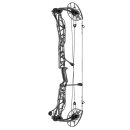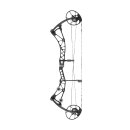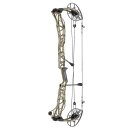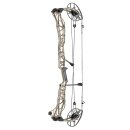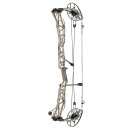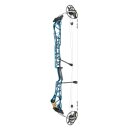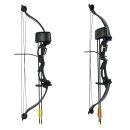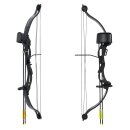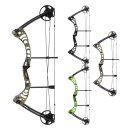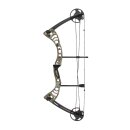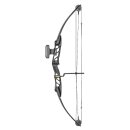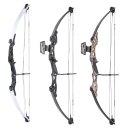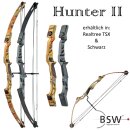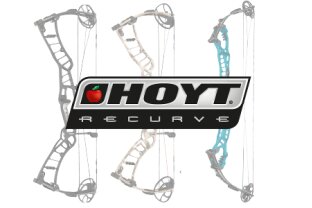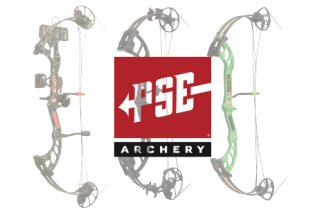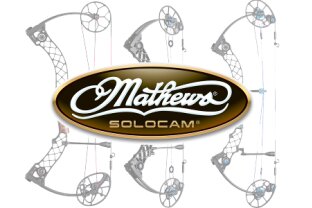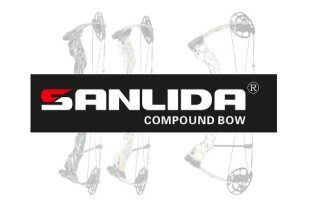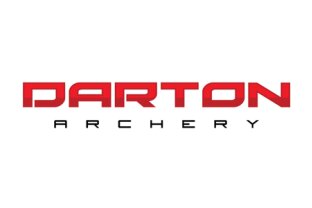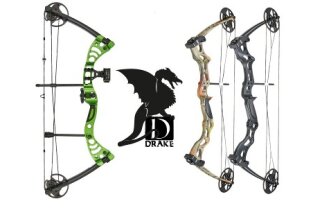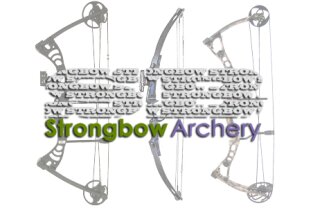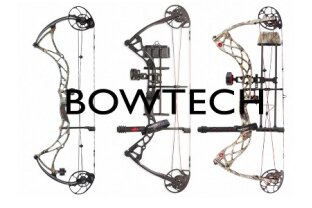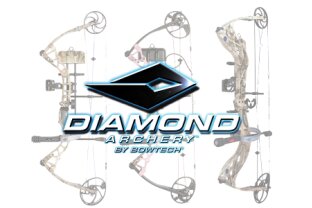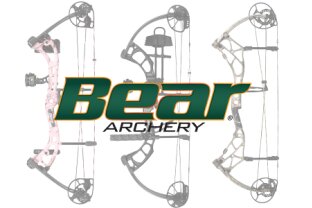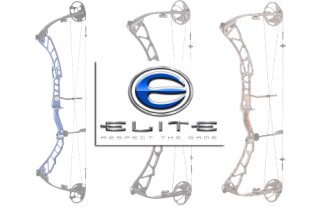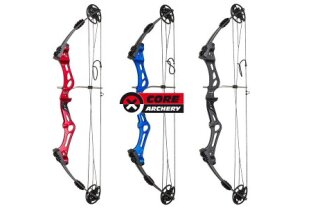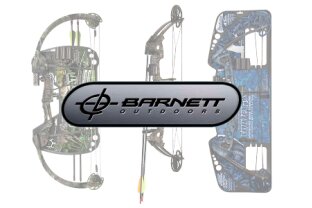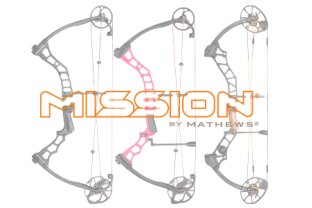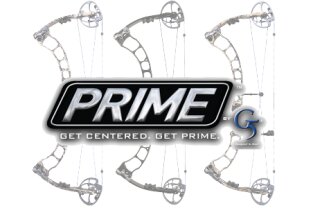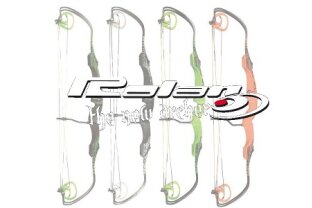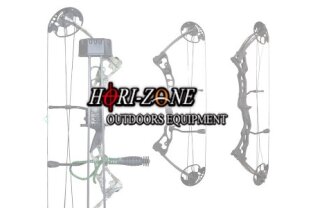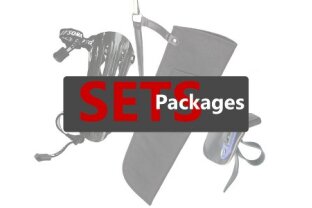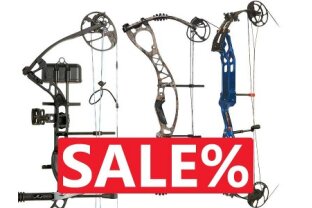Compound bows
Compound bows
The compound bow is the high tech version of the sports bows, which enables particularly precise handling and shot technique thanks to its numerous extras. Since its invention in 1966 by the American Holless Wilbur Allan, the compound bow is now one of the most popular types of bows and has a large fanbase in many countries. For all fans of compound bows, BSW offers Europe´s largest selection of bows of this kind from well-known manufacturers.
- Currently out of stock
- orderable
- orderable
- orderable
- orderable
- orderable
- orderable
- Low stock level
-
Delivery time: 1 - 3 Workdays (DE - int. shipments may differ)
- Low stock level
-
Delivery time: 1 - 3 Workdays (DE - int. shipments may differ)
- Low stock level
-
Delivery time: 1 - 3 Workdays (DE - int. shipments may differ)
- Low stock level
-
Delivery time: 1 - 3 Workdays (DE - int. shipments may differ)
- Low stock level
-
Delivery time: 1 - 3 Workdays (DE - int. shipments may differ)
- orderable
-
Delivery time: 1 - 3 Workdays (DE - int. shipments may differ)
- orderable
-
Delivery time: 1 - 3 Workdays (DE - int. shipments may differ)
- orderable
-
Delivery time: 1 - 3 Workdays (DE - int. shipments may differ)
If you hold a compound bow in your hands for the first time, you might get overwhelmed easily by the complicated and technical construction of this type of bow. But when shooting your first arrows you will quickly realize that thanks to the cams and the sight, very high precision and arrow speeds can be achieved with high draw weights, even without having to apply a lot of strength. Furthermore, compound bows are particularly compact bow types for archery. Not only do the short limbs make sure that the string will not wear out as quick and vibrates less when shooting, but the bow can also be held in place longer due to the reduced amount of strength needed. Depending on the manufacturer and preferences, compound bows with different cams and limbs are built. The special thing about compound bow limbs is that they are made of fiberglass-reinforced plastic, which is particularly pressure-resistant and has a high tensile strength.
Equipment and accessories for your compound bow
Among the compound bows at BSW, you will surely find your suitable compound bow by well-known and high-quality manufacturers. Choose a compound bow by the traditional company Hoyt, where your bow is developed and manufactured by other archers. PSE and Mathews as well are brands where you can rely on the know-how of the developers. Of course there are not just compound bows for right handed shooters but also a large selection for left handed ones. Additional accessories are part of our product range as well: You can even purchase a bow press at our shop in case you need to tune or repair your bow or exchange the string and cables (which you can of course also get at our shop), in order to knock your sports device into shape again. For extensive equipment for hunting and/or sports, we recommend you take a look at our packages. Here we offer you various sets for supplementing and upgrading your compound bow.
Compound bows - technical specialties
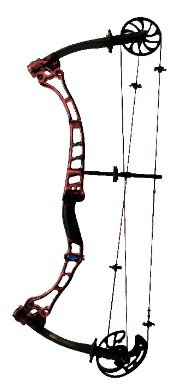
A compound bow is a bow that is second to none in terms of technical complexity. The ends of the limbs are equipped with turnable wheels, which are called cams in archery. They are arranged eccentrically and depending on the exact bow model, come in different diameters. The cams act like a lever when drawing the bow. Unlike other bows, this results in a nonlinear strength requirement when pulling the string back: the amount of force that has to be applied rises continuously at first and then decreases abruptly. This phenomenon is called Let-off effect.
The archer then only has to hold a fraction of the actual draw weight when the compound bow is fully drawn. The reduction of the draw weight is between 60% and 80% depending on the bow model. This means, when using a 60 pound compound bow, the archer then only has to hold a draw weight of anything between 12 and 24 lbs. Despite the high draw weight, the bow can be held much more calmly, which makes aiming a lot easier. The energy that is transferred to the arrow, however, still is the actual draw weight of the bow, in this case 60 lbs. This way, women as well as men can shoot with draw weights that would only be able to be reached with very insensive training, if at all.
Compound bows are shot in sports archery, which means they are used with arrow rests, sights and other accessories. The let-off effect is also very important for bow hunters. Since high arrow speed and thereby a high draw weight is required in bow hunting, the compound bow is the perfect choice for this application, since the hunter also has to aim very precisely. This is a lot easier with compound bows. Please note that hunting animals (or specific animals) is not allowed in all countries.
A compound bow must not be disassembled even after a longer period of not using it. Without proper technical devices like spanning aids and spanning devices, it is not possible to disassemble your compound bow in the first place. A string replacement should only be done by expert personnel with the necessary technical equipment. Our experienced coworkers will exchange the string or adjust the cams on your compound bow for an affordable price.
Basic stance for compound bow shooters
The feet are slightly offset with approximately 30-40 cm distance between them and in such a way that they roughly form a 90 degree angle with the direction where the arrow will go. In case of left handed shooters this is mirror-inverted. The shoulders and the hip are not turned. Only the head is facing towards the target. You should not lock your feet but stand in a relaxed way.
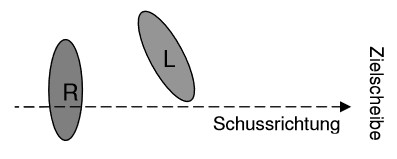
Drawing and triggering compound bows
Take your basic stance. The arrow is put onto the arrow rest in such a way that the index feather (has a different colour most of the time) is facing to the left or downwards, depending on the arrow rest. Compound shooters use a release most of the time. The release grips the string below the nock. When using a d-loop, the release grips the loop behind the nock. Before drawing the bow, you should look towards the target. The shoulders are pulled back. Then bow and arrow are lifted up to shoulder height. Pre-spanning compound bows is only possible with a lot of force. This is why the bow is pulled all the way back until the let-off triggers right away. This enables you to hold the bow a lot more calmly. The power for drawing and holding the bow comes from the shoulder- and back muscles alone. The bow should not be held in a cramped way. Compound shooters often use a finger sling, so that the bow can be held with an open hand. The fingers do not wrap around the riser but it is only resting in the palm of the hand. For aiming with compound bows, a peep-sight is often used. This little part is integrated into the string. The small hole in the peep-sight enables the archer to see through it and look onto the actual sight. The rubber sling connects the peep sight and the cables and aligns the sight in the direction of the target. Only experienced archers should use a peep without this rubber sling. If a sight is used, the needle in the sight is moved between the eye and target. If a scope is used (sight with magnification), the point in the middle is moved between the eye and the target. The target is aimed at, which is why the sight will seem slightly blurry. The tension in the shoulders and back is kept constant. When you have aimed at the target, the shot is released. Follow through until the arrow impacted in the target is important. This serves for analysing the entire shot. Thereby, possible mistakes can be spotted and corrected easily.
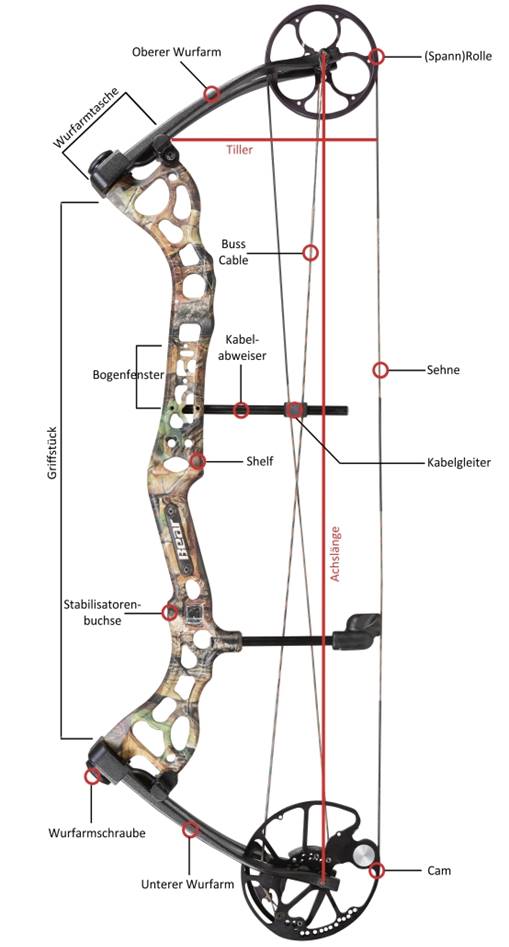
As it is the case for many other products, compound bows as well offer a variety of shapes, sizes and colours. If you are new to archery, we will help you find your best suited bow with this guide. If you are not familiar with the single components of compound bows yet, please look at the depiction, which lists and describes all the components of compound bows.
You can have everything, just not in one single bow
Before you get yourself a new bow, you will unfortunately have to understand that you cannot have everything in one bow (sorry!). Compound bows just simply have too many different characteristics. Most archers want a bow that has a breathtaking performance, a smooth draw, barely any hand shock, a good wall at full draw and a high let-off. Of course the bow also has to be extremely light, compact, good looking, easy to tune, silent, forgiving as well as affordable in particular. But this bow does not exist. When you opt for a bow with special characteristics, you will most likely have to sacrifice a couple of others. Fast bows for example are not that forgiving, bows with hardcore parallel limbs are heavy due to their riser size and so on. So you have to decide beforehand, which properties you want your bow to have and then look for this exact bow that fulfills most of your desires.
Ingenious and wild machines
Do not think that a high performance bow with 350 fps is simply faster than a "lame" 310 fps bow. A compound bow is a tool that is not charged with batteries and does not use compression. It is a simple, hand-operated device, which converts the energy it receives into another kind. The strength of your muscles is stored in the limbs by pulling the string back. As soon as you let go of it, the energy is transferred to the arrow. The ratio of the input and energy is proportional (although with far less than 100% efficiency). If a compound bow generates faster arrow speed, it only does so because you provided the energy for it with your muscles. And no matter how great and ingenious and maybe expensive your compound bow is, this principle cannot be bypassed. The compound bow will not be able to transfer more energy than it received. This unfortunately just simply does not work, since bows still have to stick to the laws of physics. The more power you want your bow to have, the more power you have to provide in order to draw the string back.
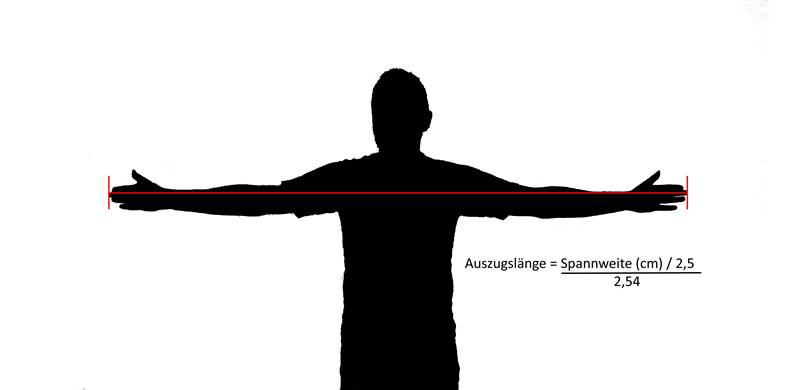
The effect of the draw length
The longer your draw length is, the longer the way where the arrow is accelerated will be - and the faster your bow will be. Approximately 10 fps per inch. If you have a bow with an IBO speed of 300 fps and 27 inches of draw length, the bow will be 30 fps slower in the end. You should not aim for the highest arrow speed, however, but for the correct draw length. If you are 1.80 metres tall, it would be ridiculous to buy a shoe in size 46, if you only need 43 and it is exactly the same case with bows. It does not make sense to buy a compound bow with 30 inches of draw length, if 27 or 28 inches suits you a lot better. Of course you would have a faster bow with 30 inches of draw length, but you would also loose comfort and control, which is much more important. Due to that, the draw length should be determined beforehand.
Draw length = (wingspread in cm / 2.5) / 2.54
The easiest method to determine your draw length is by measuring your wingspread. Stretch out both of your arms (do not overstretch them) while standing comfortably and relaxed. Now you need to measure from fingertip to fingertip of the middle fingers. Divide the result by 2.5 and again by 2.54 and you will have your draw length in inches. Generally, it is adjusted downwards.
The draw weight
The primary method to increase the stored energy is by increasing the draw weight of the bow. While all the parts on the bow are the same, the 70 lbs model will store more energy in the limbs and thereby transfer more energy than a 60 lbs model would. You should think about what draw weight is suitable for you well in advance. The maximum draw weight is normally reached by making the limbs stiffer. Of course most models are offered in a variety of draw weights, while most models have a draw weight of 60 or 70 lbs. The draw weight can also be reduced manually- sometimes more, sometimes less.If you decrease the draw weight, the performance, however, will certainly not stay the same, since the bow at its maximum draw weight is the most effective.
The draw weight - impacts on the arrow speed
Bows with higher draw weights require stiffer and heavier arrows. Due to the higher weight, the arrows are not necessarily faster, but the impact is going to be a lot more powerful, according to IBO measurements. IBO standards assume 5 grain of arrow weight per pound. Thereby, the arrow weight for a 70 lbs bow should be 350 grain, in order to be able to shoot the arrow (safely); with 60 lbs, the arrow should weigh no less than 300 grain and so on... Of course it comes to no surprise that according to the measurements of IBO, the 60 lbs model is barely slower than the 70 lbs model.
Measurements according to IBO (International Bowhunting Organization)
In order to measure various bows, a standard is necessary. Most bows are measured according to IBO standards. Because of that, it is always necessary to provide the same test conditions, which are as follows:
Exact draw weight
70lbs
Exact draw length
30"
Exact arrow weight
350 Grain
Limits of compound bows
Since the most important reason for buying a particular compound bow is its speed, let us first find out where this is coming from, which is why we will start with the topic of energy. First we have to understand that the bow itself does not generate energy, the bow only converts it. Thereby, the human still is the one who generates energy. Generally you can say that higher arrow speeds require more effort or strength drawing the bow. So, a compound bow is a simple (but still a very filigree device) that saves energy, which it receives from the archer. When releasing, the stored energy is transferred to the arrow. Thereby, it unfortunately is not possible to get out more power from the bow that was provided beforehand - and also: sadly, high tech engineering will not change this fact.
- The amount of energy that can be stored in the limbs when the bow is fully drawn
- The amount of energy that can successfully be transferred to the arrow (efficiency)
Energy storage and -release
When you pull the bow string back, the limbs are pressed inwards. The energy that you gave to the bow is stored as potential energy in the limbs until you let go of the string. When releasing, the potential energy is transferred to the arrow in the form of kinetic energy - the limbs as well as the string go back to their original position. Sounds pretty simple actually. But a careful examination about the process how the energy is stored and released is what gives the bow its actual character. This should be thought about when buying a bow for the next time. There are actually only two factors that determine the bow´s power.
The different types of cams
Modern compound bows come in a variety of different types of cams. While all of them have almost the same mechanical goals, each cam type has its positive and negative properties.
Single Cam System
Often also called One Cam System, or Solocam, these models are equipped with one cam, the second one on the top is just a wheel. Generally, Single Cam bows are more silent when shooting and also easier to maintain than 2-Cam systems since it is not necessary to synchronise the cams. It goes without saying that not all Single Cam bows are the same - there are good and not that good models. Some generate extremely high arrow speeds and act rather agressive, others are simply smooth. In general, most Single Cam bows deliver high precision and a particularly good wall when fully drawn. The reliability of Single Cam models makes them a respected and very popular system.
Hybrid Cam System
The Hybrid Cam system consists of two asymetric cams, a control cam and a power cam on the lower end. The original is actually from Darton Archery, but since Hoyt´s Cam ½ it has really gotten popular. Hybrid Cams require less tuning than traditional Twin Cam bows, but saying that they do not have to be tuned at all would be an overstatement. Therefore the cams have to be tuned to the maximum performance. The majority of models with a Hybrid Cam system are fast and surprisingly silent.
Binary Cam System
Presented by Bowtech in 2005, the Binary Cam is a modified 3-pull Dual Cam System. Unlike other systems with split cables, this system is equipped with 2 cam-to-cam control cables. Here, the cams do not pull on the opposite limb, but on the opposite cam. This "freely floating" system allows the cams to compensate a possible imbalance in the limbs or a discrepancy in the cable- or string lengths. Technically, this self-correcting system does not generate timing- or synchronisation problems. Because of that, Binary Cams have gotten a lot more popular in the industry - they are very quick and easy to tune. Ironically, the current version of the Binary Cam, the "Overdrive Binary" is not a "freely floating" cam-to-cam cable system anymore, but a system with 2 split cables, which are mounted on the upper and lower limb. The advantage is that the cam lean can be completely fixed. Although it now looks like a twin cam system, it is not...
Twin Cam System
Also often called Two Cam or Dual Cam System, in which two exactly symmetric round or elliptic cams are used. When the two cams are synchronized correctly, the system offers a maximum of precision and excellent arrow speeds. This system, however, requires more time for maintenance and tuning than the other systems in order to score consistent results. By using modern string material it got a lot easier on the other hand, since these do not allow for creep. A small disadvantage is the slightly louder noise compared to Single- or Hybrid Cam bows when shooting. The majority of shooters still relies on this system due to its excellent precision.

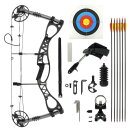
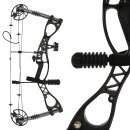
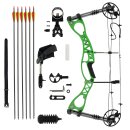
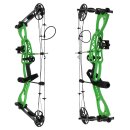
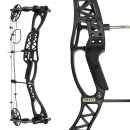
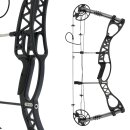
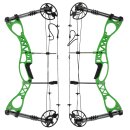
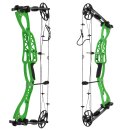
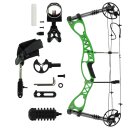
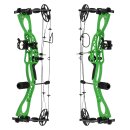
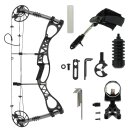
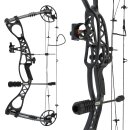
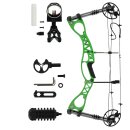
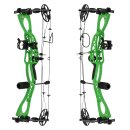
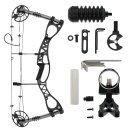
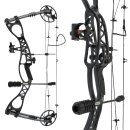
![[SPECIAL] DRAKE Gecko RTS - 30-55 lbs - Compound Bow](https://www.bogensportwelt.de/media/image/product/255683/sm/special-drake-gecko-rts-30-55-lbs-compoundbogen.jpg)
![[SPECIAL] DRAKE Gecko RTS - 30-55 lbs - Compound Bow](https://www.bogensportwelt.de/media/image/product/255683/sm/special-drake-gecko-rts-30-55-lbs-compoundbogen~2.jpg)
